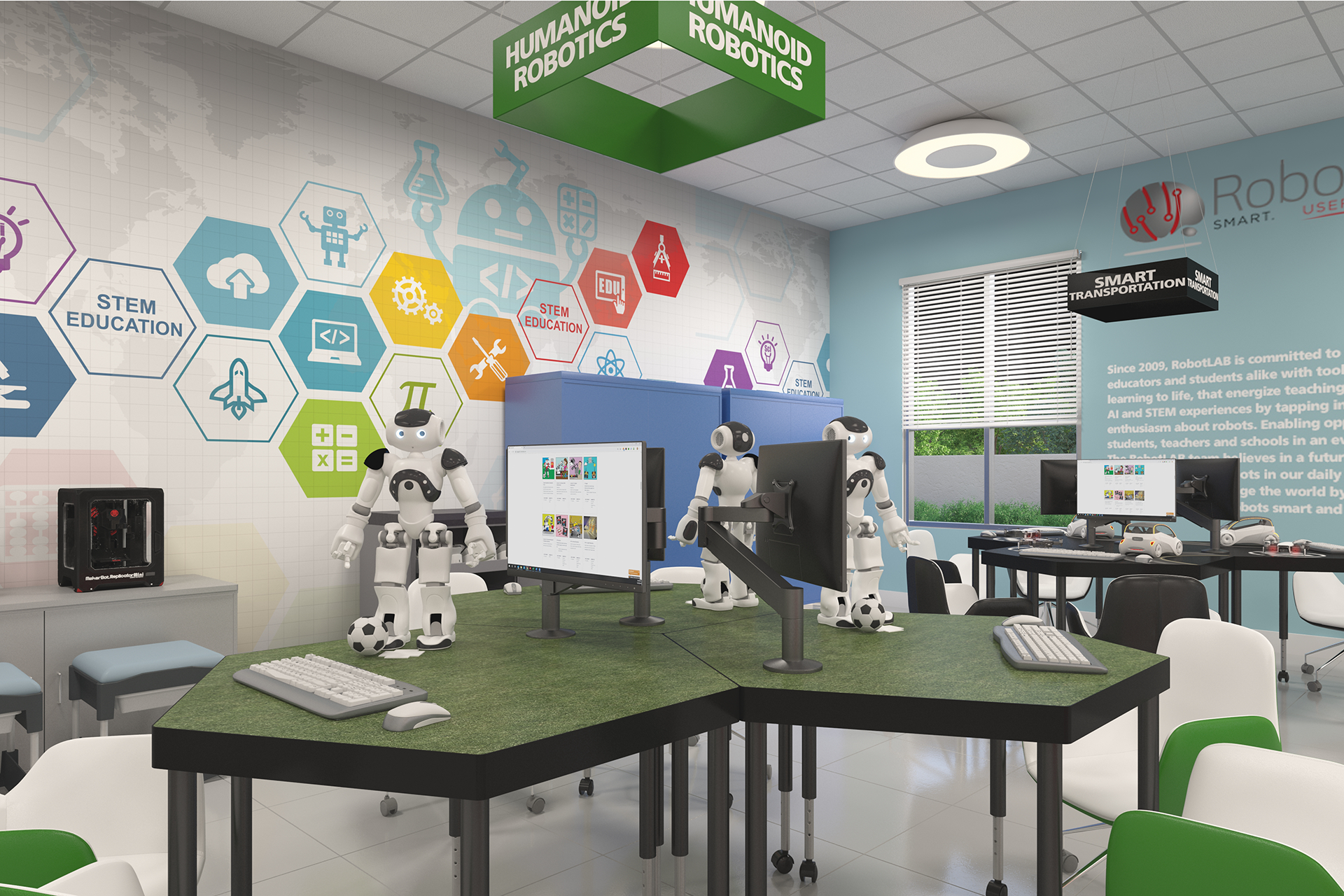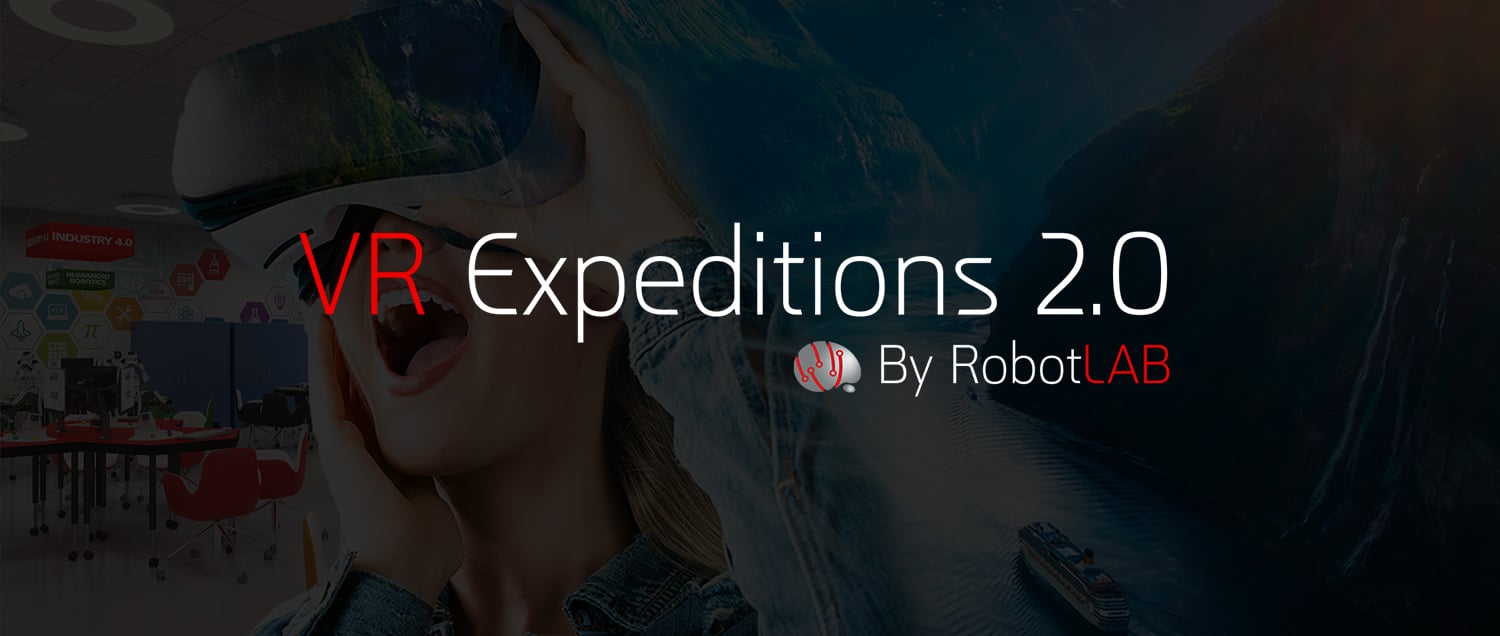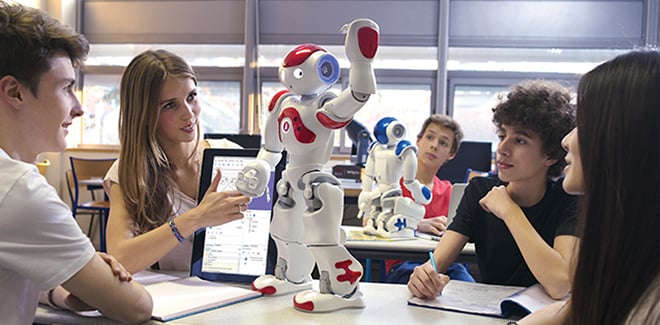RobotLAB Blog
Everything You Need To Know About Robotics in Businesses
How Important Is Technology in Nowadays’ Education
By Ryan Pell
 Photo by ThisisEngineering RAEng on Unsplash
Photo by ThisisEngineering RAEng on Unsplash
Growing up, most of us had a teacher who refused to implement technology in the lessons. They had their trusty old textbook and thought that everything that’s written there would remain true through the ages.
However, that’s not how education works. It evolves rapidly, thanks to technology for the most part. According to Promethean, the focus on boosting student engagement with tech has increased by 29%. And yet, the implementation of EdTech is the priority for only 39% of U.S. schools.
Today, we’re going to take a look at the role technology plays in today’s education and why more schools should give it a priority.
- 0 Comments
- Jul 8, 2021 10:00:00 AM
- Posted by Natalia Galvis
- Topics: EdTech, STEM, students, Technology, Innovation, Edchat, Jobs, STEMjobs, Digital Technology, online, lessons, careers
Pepper Robot Debut a Small/Medium Business Version
This affordable package allows small businesses struggling with labor shortages to automate their customer service and user experience.
 Pepper Robot Wine Store RobotLAB
Pepper Robot Wine Store RobotLAB
- 0 Comments
- Jul 7, 2021 6:25:12 PM
- Posted by Natalia Galvis
- Topics: EdTech, STEM, students, Technology, Innovation, Edchat, Jobs, STEMjobs, Digital Technology, online, lessons, careers
How To Prepare Students For The Jobs of The Future
By Joe Lombardi

Educating today's students for tomorrow's nonexistent jobs can be a challenge--one educators should be prepared to meet.
- 0 Comments
- Jul 7, 2021 10:00:00 AM
- Posted by Natalia Galvis
- Topics: EdTech, STEM, students, Technology, Innovation, Edchat, Jobs, STEMjobs, Digital Technology, online, lessons, careers
Google Expeditions Is Gone, Now What?
The long-time Educator's favorite app, Google Expeditions, was discontinued today. A replacement app is available now for educators: VR EXPEDITIONS 2.0 from RobotLAB Inc.

- 3 Comments
- Jul 2, 2021 10:25:28 AM
- Posted by Natalia Galvis
- Topics: EdTech, STEM, students, Technology, Expeditions, Innovation, Realidad Virtual, Edchat, Digital Technology, online, Virtual Reality, virtual learning, lessons, Expeditions 2.0
5 Ways to Boost Student Engagement with STEM Learning Strategies
These student engagement strategies can help educators create authentic learning experiences for all students using digital tools.
- 0 Comments
- Jul 2, 2021 10:00:00 AM
- Posted by Natalia Galvis
- Topics: EdTech, STEM, students, Technology, Innovation, Edchat, Digital Technology, online, lessons
How Learning Is Improving With Digital Transformation
 Photo by John Schnobrich on Unsplash
Photo by John Schnobrich on Unsplash
The digital transformation of the economy has impacted every industry. Some of the most significant changes from that transformation have been in education.
New digital developments like remote learning, artificial intelligence (AI), virtual reality (VR), and augmented reality (AR) all have the potential to radically transform how education is delivered and experienced.
Educators and EdTech developers are working to apply these innovations to the industry. Some of their experiments have already had a major impact on classrooms around the world.
- 0 Comments
- Jun 30, 2021 10:00:00 AM
- Posted by Natalia Galvis
- Topics: EdTech, STEM, students, Technology, Innovation, Edchat, Digital Technology, online, lessons
How Hidden Classroom Dynamics Can Stymie Girls in STEM
By Youki Terada
If we want to close the gender gap in science, we need to look at the invisible forces that shape classroom culture.
- 0 Comments
- Jun 29, 2021 10:00:00 AM
- Posted by Natalia Galvis
- Topics: Robotics, EdTech, STEM, Computer Science, Problem Based Learning (PBL), teachers, Coding, Robots,, students, STEMchat, Edchat, Digital Technology, teaching, online
4 Steps to Maximize Summer Learning
 Photo by Start Digital on Unsplash
Photo by Start Digital on Unsplash
Summer learning will play a critical role in students' return to full-time in-person learning this fall.
- 0 Comments
- Jun 25, 2021 10:00:00 AM
- Posted by Natalia Galvis
- Topics: Robotics, EdTech, STEM, Computer Science, Problem Based Learning (PBL), teachers, Coding, Robots,, students, STEMchat, Edchat, Digital Technology, teaching, online
Turn To Coding And Robotics If You Want Your Students To Posses a Growth Mindset

Diligence, a curious spirit, and perseverance are qualities we desire to see in our students. These traits are elements of the “growth mindset.” Teaching students coding presents one of the best opportunities to develop and nurture kids’ growth mindset in the school setting. This article shows five scenarios to support this position.
- 0 Comments
- Jun 24, 2021 10:00:00 AM
- Posted by Natalia Galvis
- Topics: Robotics, EdTech, STEM, Computer Science, Problem Based Learning (PBL), teachers, Coding, Robots,, students, STEMchat, Edchat, Digital Technology, teaching, online
Setting Students Up for Careers in Computer Science
By Dan Matthews
 Image Source: Pexels
Image Source: Pexels
Discussing careers with students can be challenging. After all, a lot of weight is often placed upon the subject. As a teacher, you're expected to provide insights into potential careers that empower students to thrive beyond school.
In this regard, computer science can be a great area of discussion and exploration. It has increasing relevance in the current digital landscape. There is also a growing number of professions it can be applied to. These factors, among others, can make it an important consideration. Indeed, it is part of the reason that it is imperative to teach computer science in schools. Yet, it has something of a dry reputation. Students who may not be inclined toward the science, technology, engineering, and math (STEM) subjects run the risk of missing out on careers that enrich their adult lives.
So, how can you best go about setting students up for careers in computer science? Let’s take a closer look at some areas of consideration.
- 0 Comments
- Jun 23, 2021 10:00:00 AM
- Posted by Natalia Galvis
- Topics: Robotics, EdTech, STEM, Computer Science, Problem Based Learning (PBL), teachers, Coding, Robots,, students, STEMchat, Edchat, Digital Technology, teaching, online
Relevant Posts
- Augmented Reality: A Tool for Teaching Students Robot Programming
- Fostering Innovation Through Youth Education in STEM and EdTech
- How Parents Can Foster STEM Learning Beyond the Classroom
- How Robotics Cultivates a Deep Understanding of Mathematics in Students
- RobotLAB Receives EDTech Chronicle 2023 ‘BESTIE’ Award for Landmark Partnership with American Samoa Dept. of Education.
Subscribe to Email Updates
-
I Want To Learn MoreADDITIONAL INFORMATION

